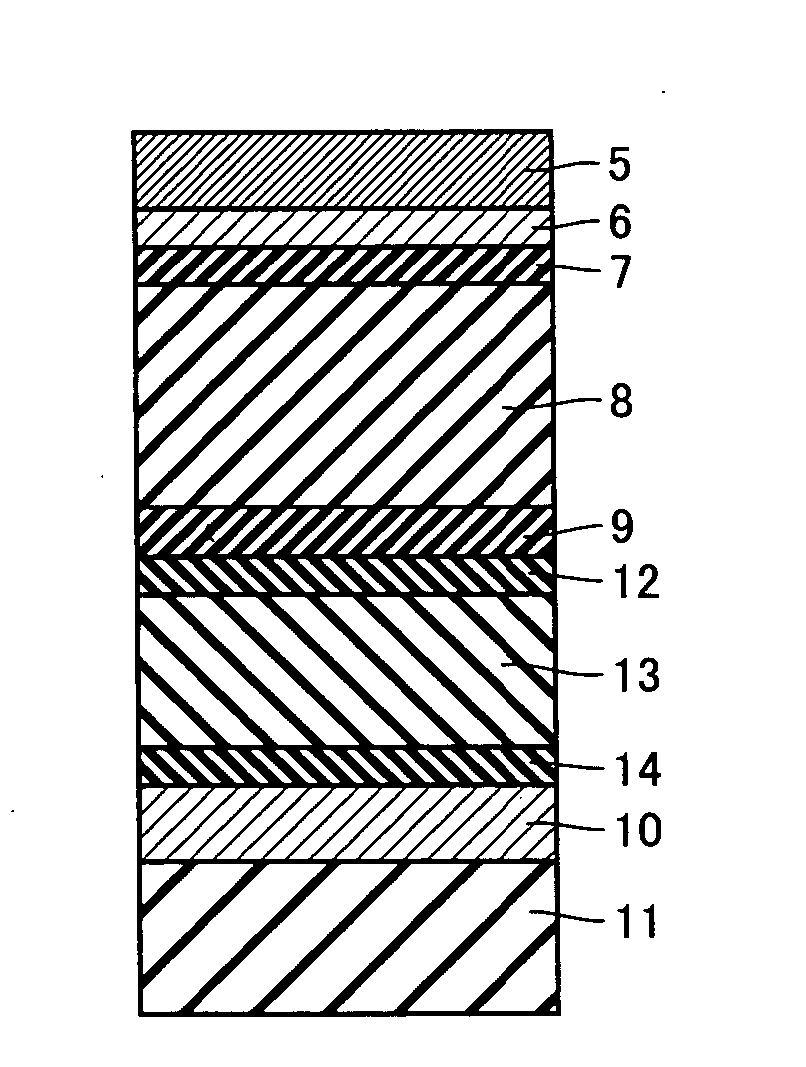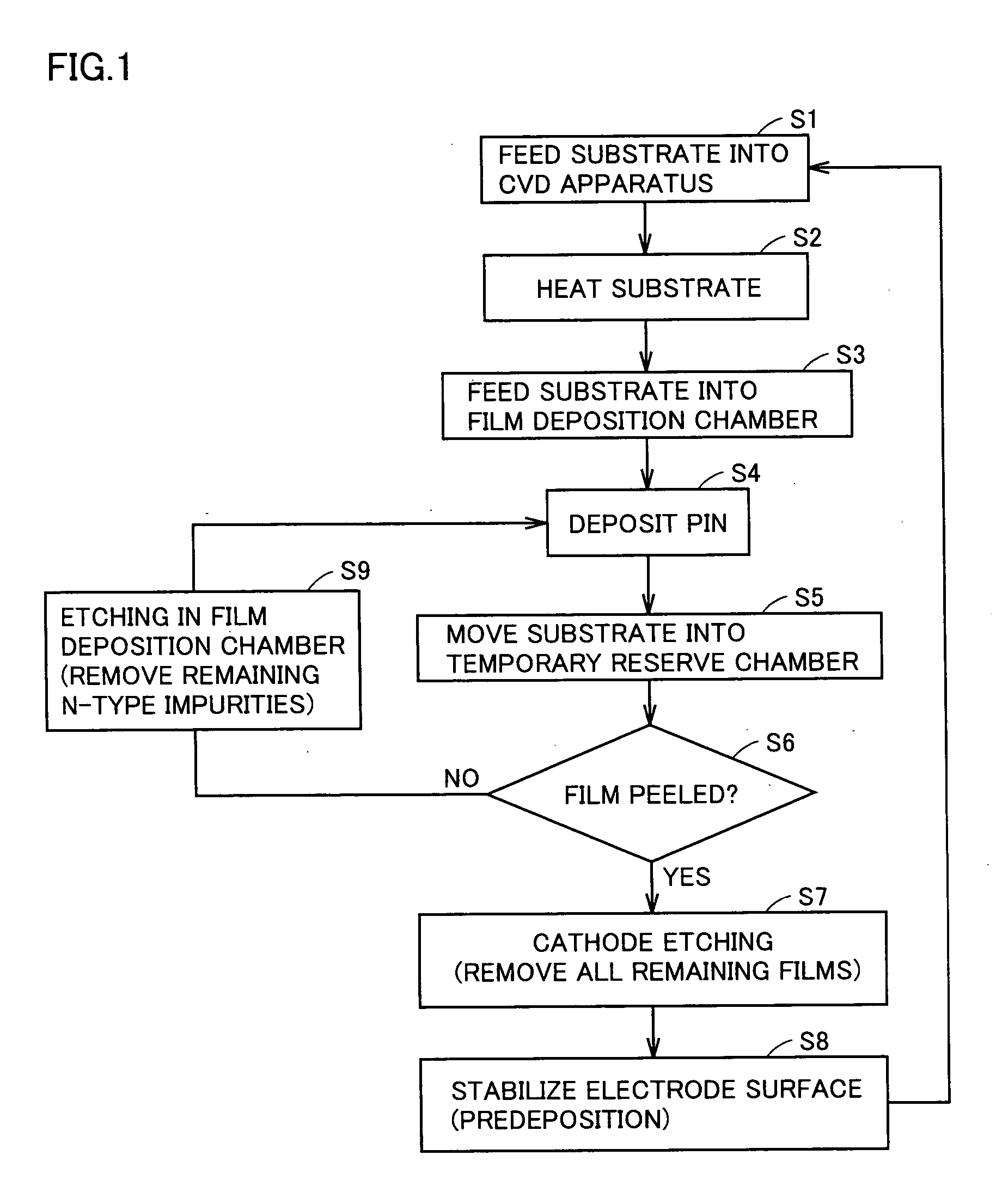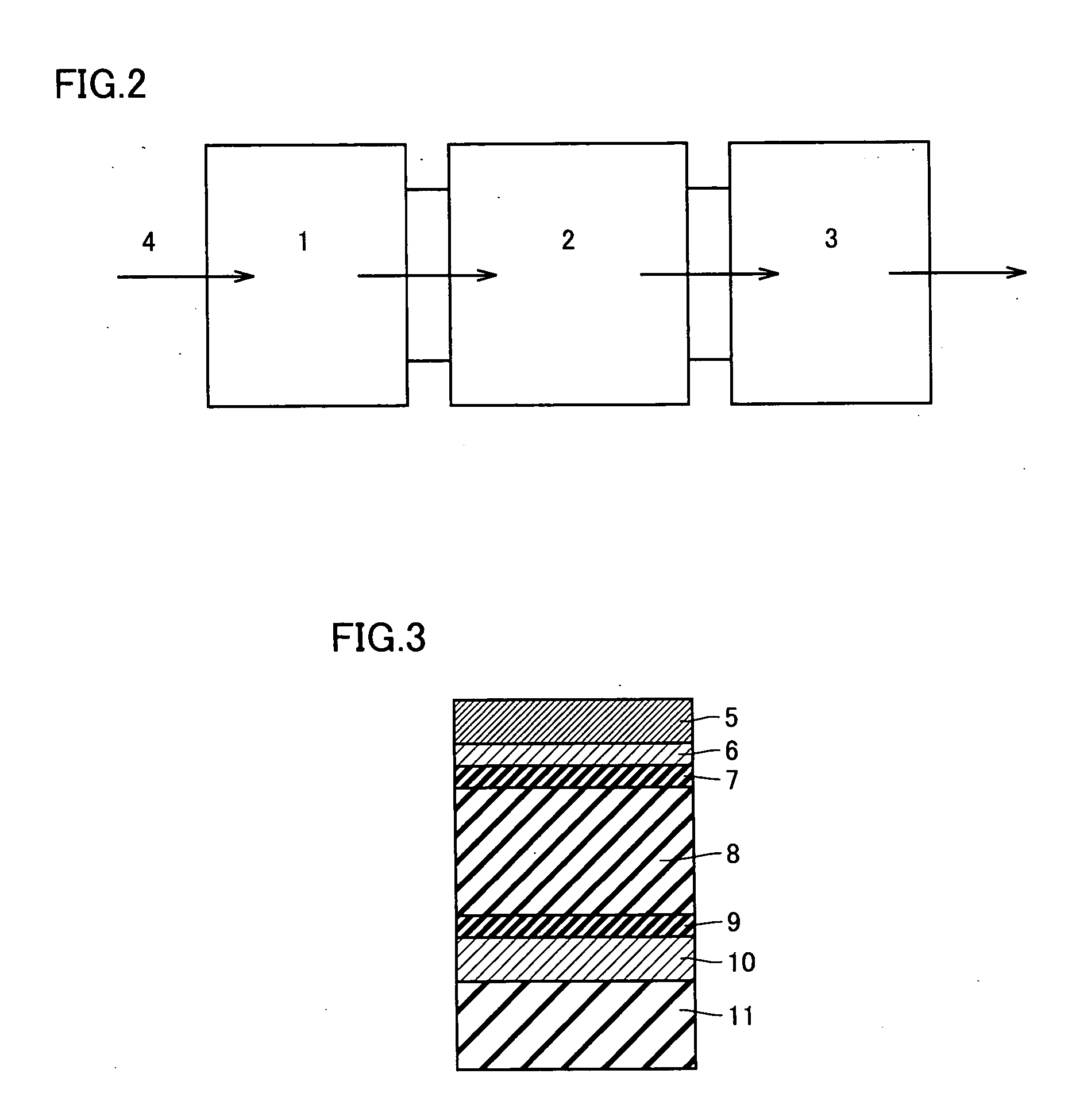Silicon-based thin-film photoelectric conversion device and method of manufacturing thereof
a technology of photoelectric conversion device and thin film, which is applied in the manufacture of final products, basic electric elements, coatings, etc., can solve the problems of increasing the cost of adding the production cost of solar cells to the cost of key equipment used in the process of manufacturing devices, increasing the cost of cvd equipment for example, and achieving excellent performance and quality, simple manufacturing equipment, and low cost
- Summary
- Abstract
- Description
- Claims
- Application Information
AI Technical Summary
Benefits of technology
Problems solved by technology
Method used
Image
Examples
example 1
[0040] In Example 1, silicon-based thin-film photoelectric conversion devices having the structure shown in FIG. 3 were successively manufactured through the manufacturing process repeated multiple times. A first silicon-based thin-film photoelectric conversion device was manufactured by forming transparent conductive film 10 of SnO2 on substrate 11 of glass and thereafter depositing boron-doped p-type semiconductor layer 9 of microcrystalline silicon with a thickness of 10 nm, non-doped i-type photoelectric conversion layer 8 of microcrystalline silicon with a thickness of 3 μm and phosphorus-doped n-type semiconductor layer 7 of silicon with a thickness of 20 nm in this order on transparent conductive film 10. Further, on n-type semiconductor layer 7, conductive film 6 of ZnO with a thickness of 50 nm and metal electrode 5 of Ag with a thickness of 300 nm were formed so that a back electrode unit comprised of conductive film 6 and metal electrode 5 was provided.
[0041] In this exa...
example 2
[0046] Deposition of pin layers was successively done approximately 50 times under the conditions employed in Example 1 and consequently the total thickness of films remaining impurities stacked on the cathode reached 150 μm or more. Point detects due to peeling of the remaining films on the cathode were likely to occur and accordingly it was found that the manufacturing yield of photoelectric conversion devices decreases to 30% or lower. After the yield deterioration due to the peeling of remaining films was confirmed, the remaining films on the cathode were removed under the same conditions as the cleaning conditions used in removing remaining n-type impurities in the film deposition chamber in Example 1. Specifically, as an etching gas and a diluent gas, nitrogen trifluoride and argon gas of 20 volume % in concentration were supplied and etching was done under a pressure of 67 Pa. The resultant etch rate was 10 nm / s or higher so that all the stacked films with a thickness of 150 ...
example 3
[0047] On a photoelectric conversion device including an amorphous silicon-based photoelectric conversion layer, a photoelectric conversion device including a microcrystalline silicon-based photoelectric conversion layer that was firstly produced by a similar method to that in Example 1 was stacked to produce a stacked photoelectric conversion device having the structure as shown in FIG. 5. The photoelectric conversion efficiency of the stacked photoelectric conversion device was measured in a similar manner to that in Example 1 and the measurement was 12.5%. After this, by a method similar to that in Example 1, the cleaning process was followed for removing remaining n-type impurities. Then, a photoelectric conversion device having a microcrystalline silicon-based photoelectric conversion layer that was secondly produced was obtained. This photoelectric conversion device was then stacked on a photoelectric conversion device including an amorphous silicon-based photoelectric convers...
PUM
| Property | Measurement | Unit |
|---|---|---|
| Temperature | aaaaa | aaaaa |
| Length | aaaaa | aaaaa |
| Length | aaaaa | aaaaa |
Abstract
Description
Claims
Application Information
 Login to View More
Login to View More - R&D
- Intellectual Property
- Life Sciences
- Materials
- Tech Scout
- Unparalleled Data Quality
- Higher Quality Content
- 60% Fewer Hallucinations
Browse by: Latest US Patents, China's latest patents, Technical Efficacy Thesaurus, Application Domain, Technology Topic, Popular Technical Reports.
© 2025 PatSnap. All rights reserved.Legal|Privacy policy|Modern Slavery Act Transparency Statement|Sitemap|About US| Contact US: help@patsnap.com



